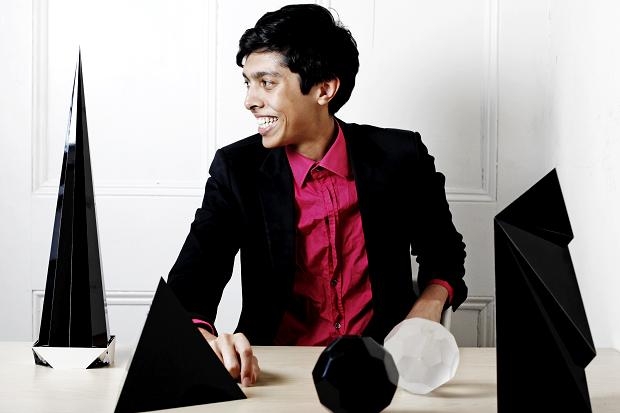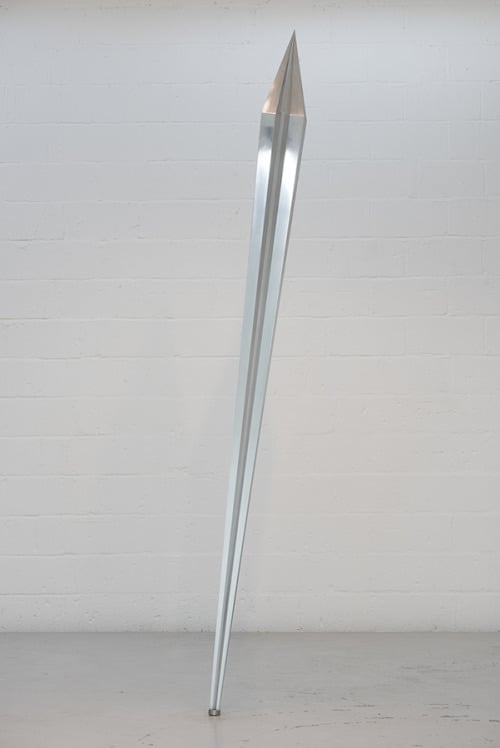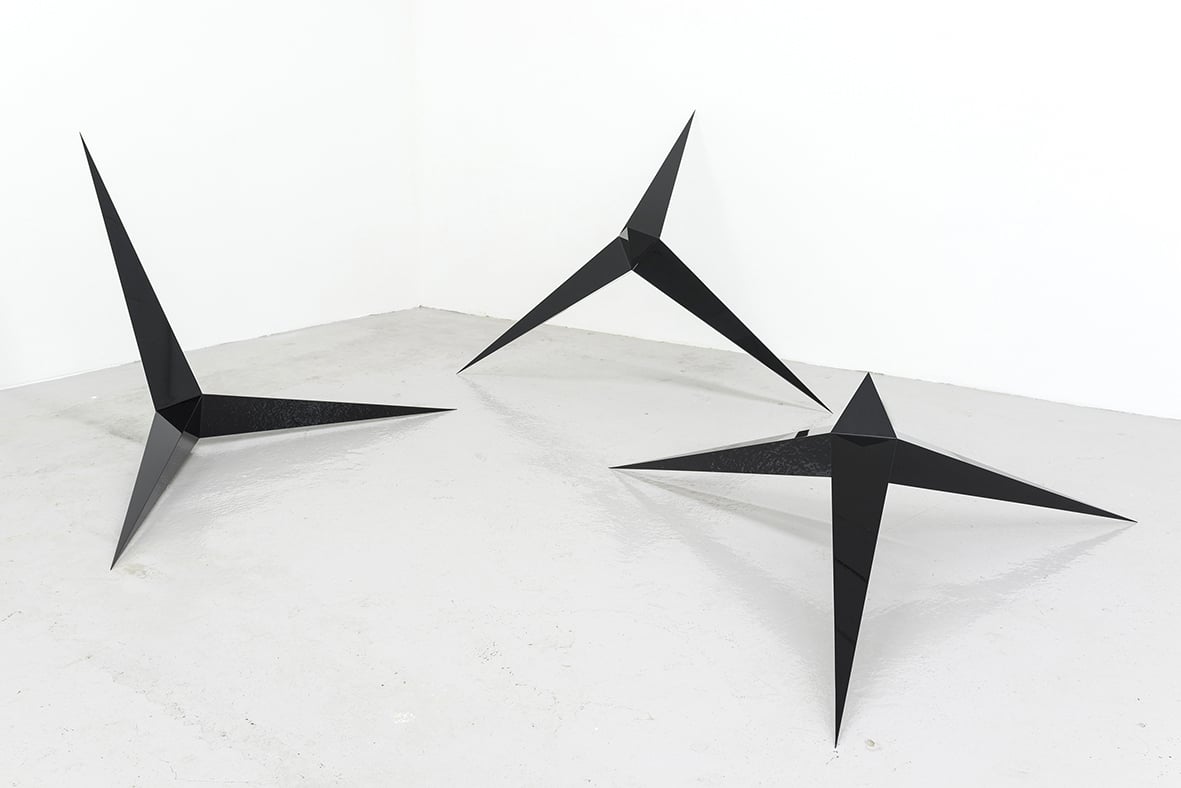People
artnet Asks: Mohammed Qasim Ashfaq
The young, London-based Pakistani artist discusses his Wagnerian inspirations.

The young, London-based Pakistani artist discusses his Wagnerian inspirations.

Lorraine Rubio

Mohammed Qasim Ashfaq’s work combines traditions of abstraction in Islamic art, Western modernism, and the art of science fiction. The result? Striking geometric sculptures and wall pieces that are entirely unique to his cross-cultural identity as a Pakistani artist working and living in London. There is a strong investigation of form and aesthetics evident throughout his work.
Ashfaq is a graduate of the Slade School of Art and Gray’s School of Art, Aberdeen. He participated in “TECTONIC,” the Moving Museum’s inaugural show during Art Dubai 2013, and at the 7th Asia Pacific Triennial of Contemporary Art; his work was also featured in “Bold Tendencies 4” in Peckham, South London, in 2010.
When did you know you wanted to be an artist?
I ended up at the Slade, and that’s when I realized it was a really good idea. It was an accident, really. Primarily, it’s the only thing that I was good at in high school; I would have liked to have pursued architecture, but I didn’t quite understand math. Secondly, there was a Salvador Dalí exhibition at the galleries of modern art in Edinburgh, and I remember standing looking at Dalí’s hand in Impressions of Africa; it had a red glow around it, and I felt it impossible to see it as anything other than the fact that Dalí was reaching out to the viewer, me.

Mohammed Qasim Ashfaq, Black Hole III (2014)
Graphite on Fabriano 4 smooth 200 gsm, geometry diameter 60 cm., overall paper size: 75 x 75 in.
Photo courtesy of Hannah Barry Gallery.
What inspires you?
Just a couple of examples, in terms of art, would be the first scene from Das Rheingold, Winterstürme, sung by Jonas Kaufmann, and the Notung leitmotif, and, especially, the moment in Die Walküre that introduces the sword in the tree; it is magical. Wagner is the pinnacle of art. Speaking of Germany, German fabrication is one the most inspiring things I’ve ever witnessed. I can’t put it any better than what I was told by a gentleman: “Metalwork is in the breast milk of the mothers,” which means there’s only one place to go with that, and that is Jeff Koons. I’m not a massive fan of paintings, wood-carved sculptures, BMW’s, elephant-shaped mirrors, balloon swans, etc., but there’s something absolutely unparalleled within the world of art, and with the manner in which Koons handles these various media. If it’s a bad day, then my default is any one of the Adam Curtis documentaries that contain Wagner.

Mohammed Qasim Ashfaq, ROD (2010–2014)
Solid aluminium, edition of 3 + 2AP, 300 cm. high
Photo courtesy of Hannah Barry Gallery.
If you could own any work of modern or contemporary art, what would it be?
I’d really like to own an Anni Albers wall hanging from 1926. I think that would only be possible if I owned the Bauhaus in Dessau—ultimately, two equally available works of art.

Mohammed Qasim Ashfaq, FALLING STARS (2013)
Lacquered steel in 3 parts, installation dimensions vary, edition of 3 + 2AP, each 88 x 143 x 82 cm.
Photo courtesy of Hannah Barry Gallery.
What are you working on at the moment?
Nothing much at the moment. I’m trying to make something perfect. It’s taking a while, and I still don’t have anything to show for it. It’s all about the journey.
When not making art, what do you like to do?
I really enjoy going home to Dunfermline and being with my family. I also make sure that I get to spend time with my young cousins; we play football, Fifa on the PlayStation, and we always do some sort of drawing or clay modeling together. I have a really good collection of Fimo clay objects, mainly cakes, ice lollies, and also a knitted doughnut. It’s pretty great.